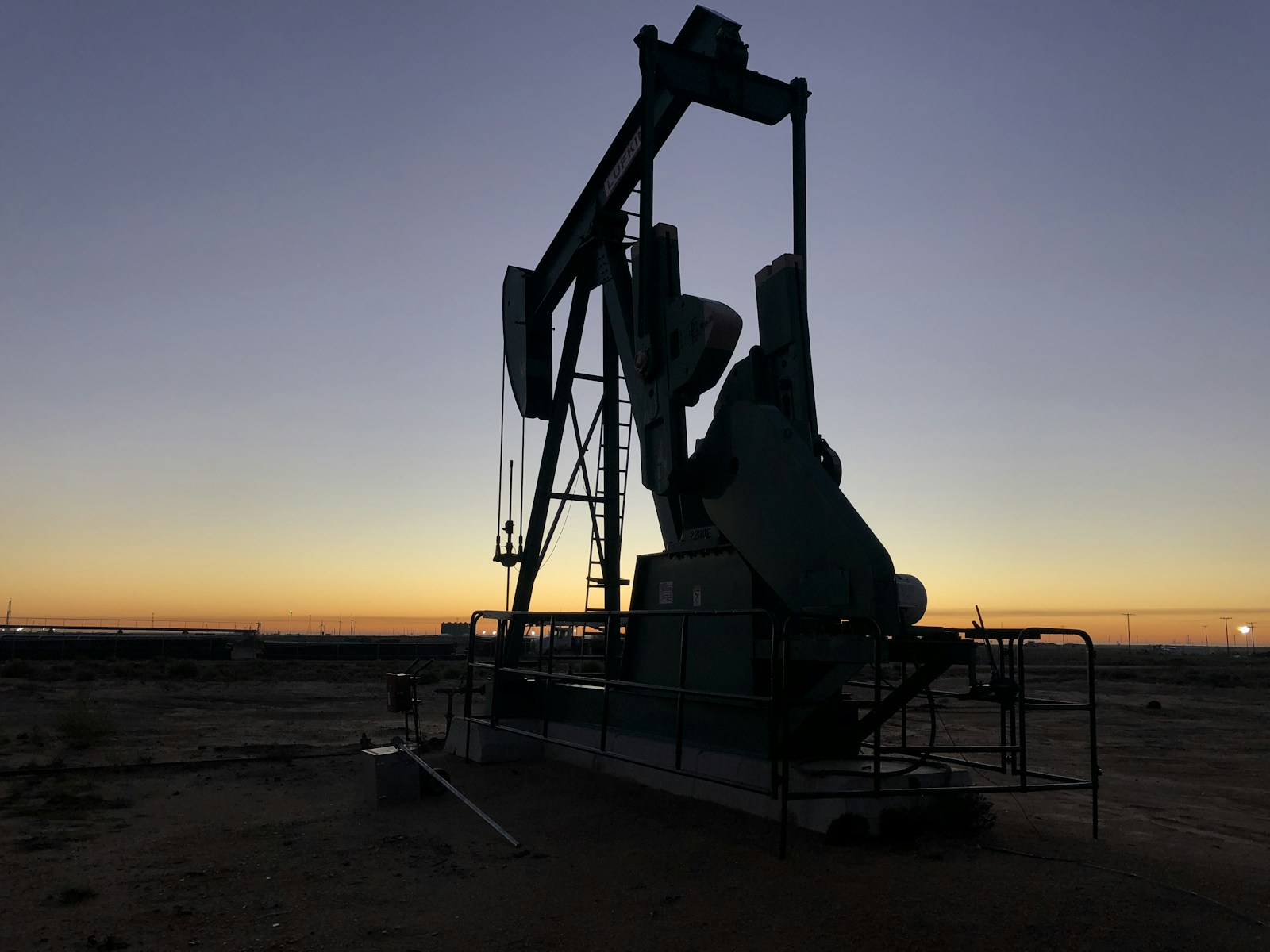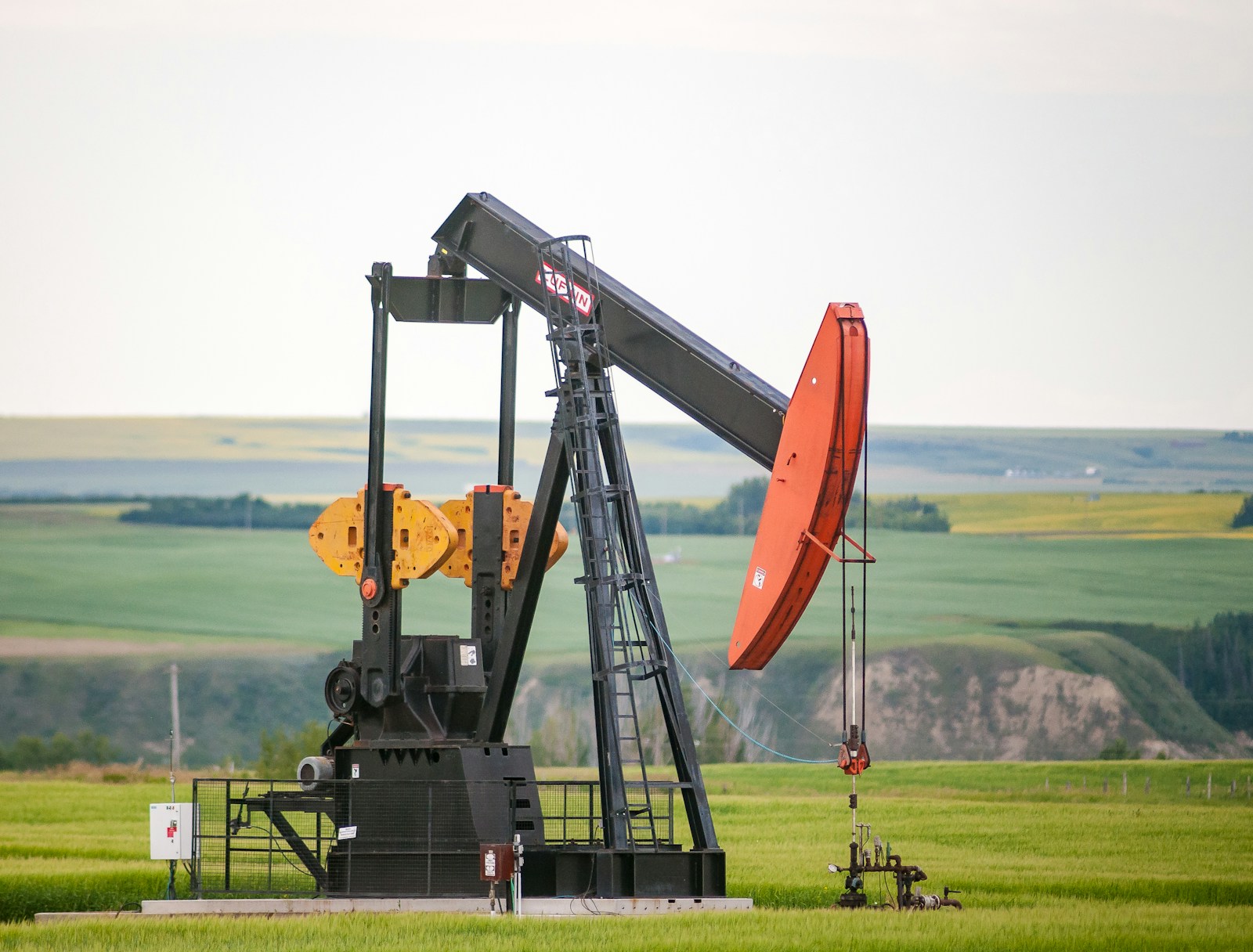What Every Rural Buyer Should Know — By Rory Hale – REALTOR®, Rural Properties & Acreages near Calgary
Out here in the Alberta foothills, rural life is full of surprises. Maybe it's the herd of deer that treats your backyard like a buffet. Maybe it's the neighbour's rooster who thinks 3 a.m. is a reasonable wake-up call. But sometimes, it's something less feathery and more industrial: an oil or gas well.
That’s right — many acreages in Alberta come with a little extra under the soil. And depending on what kind of well it is (and its condition), it could be a blessing, a bother, or a bit of both. So let’s roll up our sleeves and dig into the gritty, sometimes greasy, truth.
Summary:
Owning rural land in Alberta can come with unexpected bonuses—or burdens—when oil and gas wells are involved. This post offers a informative guide to help landowners and buyers understand the different types of wells (like sweet gas, sour gas, and injection wells), what their statuses mean (active, suspended, or abandoned), and how to uncover information about your property. It explores both the financial upside and the risks, including what happens if a company fails to pay or properly clean up. Some real-world examples, and helpful links to government resources, this is a must-read for anyone navigating acreage ownership in Alberta.
🛢 Oil vs Gas vs Injection?
You’ve found your dream acreage—rolling hills, a view of the Rockies, and a faint hum coming from a metal shack behind the trees. Your realtor (that’s me) mentions, “That’s an active sweet gas well—completely normal out here.” You smile, but your brain is asking: Sweet gas? Is there sour gas too? Do I need a SCBA mask or a chemistry degree?
Let’s break it down in plain language, with a few elbow-patched facts for flavour.
🛢️ Oil Wells
What they are:
These wells tap into underground reservoirs of crude oil—Heavy Oil is thick, dark, and sticky. Oil wells often bring some gas with them, but the oil (Condensate) is the prize.
How they operate:
Oil is pumped to the surface using pumpjacks (those iconic nodding donkeys you see on prairie landscapes) or with pressurized systems (Injection, EOR), or SGAD (Steam-Assisted Gravity Drainage).The product is stored in tanks nearby or piped away.
Benefits to landowners:
Surface lease payments, depending on your contract with the producer.
Easier to assess risks—less immediate danger than gas leaks
Risks:
Surface spills or leaks
Soil contamination if not maintained
Long-term environmental monitoring may be needed after abandonment
Think of oil wells as the steady plow horse of the energy world: messy but reliable, and they’ve been around a long time.
🍃 Sweet Gas Wells
What they are:
Natural gas wells that produce dry gas with very low or no hydrogen sulfide (H₂S—that’s the stinky, toxic stuff.) Sweet gas is safe enough that with good equipment, leaks aren't immediately dangerous.
How they operate:
Typically involve dehydrators, meters, and underground pipelines. The surface footprint can be small, and equipment is relatively quiet.
Benefits to landowners:
Lower risk of toxic exposure
Smaller surface footprint
Can still pay decent surface lease fees
Risks:
Still flammable—gas leaks can be dangerous in confined areas
Surface disturbance during drilling or maintenance
Gas odorants are added for detection, but not always noticeable in rural areas
Sweet gas, think of it like a house old cleaner, it’s one the more mild cleaners (Windex), it not something you want to drink. But over all it’s not going to hurt you if you get some on your hands.
☠️ Sour Gas Wells
What they are:
Natural gas wells that contain hydrogen sulfide (H₂S)—a toxic, corrosive, and deadly gas that smells like rotten eggs (until it knocks out your sense of smell).
How they operate:
Highly regulated. Must have emergency response plans, exclusion zones, and leak detection systems. Often fenced, locked, and signed like a fortress. You may see flaring towers burning off excess gas.
Benefits to landowners:
Higher lease payments due to increased risk
Sometimes quicker reclamation due to stricter oversight
Risks:
Life-threatening leaks if containment fails
Evacuation protocols in some areas
Stricter land-use restrictions nearby (e.g. no building within a certain radius)
Sour gas wells can be dangerous and deadly, Be very careful when considering property with wells with H2S gas.
🌀 Injection Wells
What they are:
These are not production wells. They’re used to inject fluids (water, steam, or CO₂) back into underground formations. The goal is often to enhance oil recovery or dispose of waste fluids.
How they operate:
Pumps move material underground under pressure. These wells don’t produce energy; they support other wells or manage waste.
Benefits to landowners:
Surface lease income
Little noise or surface equipment once built
Risks:
Risk of groundwater contamination if poorly sealed
Minimal economic upside (no royalties, not that there are many wells that pay royalties in Canada)
Think of injection wells like plumbing for the subsurface—necessary infrastructure, but not the kind of thing you show off at dinner parties.
🤔 How Do I Know What’s On My Property?
If you're standing on a beautiful piece of land with a pumpjack in the distance, here's how to find out what kind of well you're dealing with:
Use the Alberta Energy Regulator's OneStop Tool
Website: https://www.aer.ca
Go to AER OneStop → Search by legal land description (your realtor can help with this)
You’ll see all registered wells and their status, including if it's oil, gas, sweet/sour, or injection
Contact the Orphan Well Association (OWA)
Website: https://www.orphanwell.ca
Phone: 1-844-645-7445
They can tell you if the well is orphaned (i.e., no company is responsible anymore)
Call the Alberta Surface Rights Board
Website: https://surfacerights.alberta.ca
Phone: 780-427-2444
They help resolve payment issues between landowners and companies
Farmer’s Advocate Office (Alberta Agriculture)
Website: https://www.alberta.ca/farmers-advocate-office.aspx
Phone: 310-FARM (3276)
They offer advice and legal resources if you’re unsure what your rights are
Check Your Land Title or Surface Lease Agreement
Ask your realtor (me!) or your lawyer for help interpreting what's there
Titles may list caveats or easements for pipeline access, pad sites, or injection rights
Talk to your local municipal planning department to see how the well affects zoning and development potential.
Having a well on your land doesn’t have to be a deal-breaker—or a golden goose. It’s just one more piece of the rural puzzle. Understanding the type of well, its current status, and who’s responsible for it can help you make a smart, confident decision.
Sometimes, a sweet gas well is quietly humming behind the trees, paying its rent and minding its business. Other times, it’s a sour deal waiting to stink up your dream property—but that’s why you’ve got me.
🌾 Bottom line? Do your homework, ask the tough questions, and bring a good guide along for the ride. You’ll be fine.
Now that you know the types of wells out there, you should also know what their status is and how it affects you as a land owner. Here’s a breakdown:
Producing Wells are the crown jewel of rural energy assets. These are maintained and operated wells still pulling oil or gas. Think of them as a tenant that pays rent and mows the lawn. You might receive annual surface lease payments ranging from $1,500 to $5,000+, depending on infrastructure.
Suspended Wells are in limbo — like your cousin’s music career. They’re shut down, but not sealed up. The company might resume production one day. Until then, no income, and a bit of uncertainty.
Abandoned Wells have been properly decommissioned and plugged. They’re not dangerous if correctly closed, but they still require monitoring. No rent, no oil, but no immediate worries.
Orphaned Wells are the bad apples. These are wells left behind by bankrupt companies. They're like inherited junk cars on your lawn — you didn’t ask for them, and now someone’s got to deal with them. That “someone” might be the Orphan Well Association (OWA) — or in the worst cases, you.

💰 The Financial Side: What’s in It for Me?
When an oil company drills or maintains a well on private land, they must compensate the landowner — usually through a surface lease agreement. But before you imagine sipping margaritas on royalty money, here’s the reality:
You don’t own the resource — just the surface rights.
Surface lease payments typically cover land use, noise, inconvenience, and access.
Payments vary widely, often between $500 to $5,000 per year per well pad.
Let’s say you’ve got a producing well with a tidy lease agreement: you might receive $2,500 annually for an access road and pad site. Over a decade, that’s a respectable $25,000. Enough for a new roof, or a down payment on a tractor with Bluetooth.
But these agreements can be decades old — and not all are generous. Some leases were signed in the 1980s and haven’t been renegotiated since shoulder pads were in style
⚠️ What Happens When Things Go Sideways?
Let’s talk about a few real-world examples from the news:
In 2019, Trident Exploration walked away from over 4,700 wells — many of which became orphans, leaving landowners in limbo.
In 2023, a farmer in central Alberta was awarded $180,000 in compensation after a dispute over unpaid lease fees. It took years of legal wrangling.
If the oil company goes bankrupt, lease payments may stop, and you might be stuck with a well and no one responsible for it. That’s where the Orphan Well Association comes in. They’re funded by industry levies and government support, and their job is to safely decommission orphan wells. But there’s a backlog — over 3,500 wells were still awaiting cleanup in 2024.
In short: don’t count your barrels before they’re pumped.
⚖️ Who’s Liable for What?
The oil company is supposed to cover:
Site operation and safety
Access road maintenance
Environmental monitoring and eventual reclamation
But the landowner still owns the surface, meaning you could be on the hook for:
Access issues
Reduced land value
Limited development options near the well site
If the well is Orphaned it will fall to you to deal with.
Imagine trying to build a new barn, only to learn there’s a buried pipeline running underneath. Surprise!
Some landowners also face reclamation delays after abandonment. A capped well might sit untouched for a decade, waiting for inspection and topsoil remediation.

🤝 A Realtor Can Help (That’s Me!)
You don’t have to figure this out alone.
Investigate lease agreements
Negotiate property value adjustments for orphaned wells
Understand reclamation timelines
Contact the right regulators and departments
My goal is simple: help you love your land — and know what you’re getting into.
🌻 Final Thoughts: Don’t Panic — Just Prepare
Having a well on your property isn’t inherently bad. In fact, many Alberta landowners live alongside them with no trouble at all. But like any part of rural living — whether it’s managing a septic field or tracking down your escape-artist goat — it pays to be informed.
🔎 Do your research
🗣 Ask the tough questions
📞 Call the regulators
📋 Get agreements in writing
🤝 And work with someone who’s been through it before
Whether you're buying a dream acreage or just curious about the land you own, I’m here to help you dig up the facts before you plant your roots.
Disclaimer: This post is for informational purposes only. Always consult with a lawyer, the Alberta Energy Regulator, or a qualified land use professional before making decisions regarding oil and gas leases, land purchases, or surface rights.
📞 Questions? Want help investigating a property? Contact me today — let’s chat over coffee and the current listings.


